#Lunar Geology
Explore tagged Tumblr posts
Text
ATTENTION, SAILOR MOON FANS:


Thank you for your attention.
#sailor moon#spaceposting#lunar geology#astronomy#yes I know they aren’t named after the characters#but this is really cool ok
4 notes
·
View notes
Text



08 July 1876
#18760708#Suggestions in Floral Design#Imitation of Chinese and Japanese Bronzes#Fading of Colors in Zoological Collections#Lunar Geology#Sickle-Medick#Hasel-Nut or Hazel-Nut#Blackthorn or Sloe#Scarlet Runner-Bean#Maple#Lessons In Mechanical Drawing No. XIV#Fig. 129#Fig. 130#Fig. 131#Fig. 132#Fig. 133#Iron in the Spleen#Transferring#Reversing#and Transporting Negatives
0 notes
Text
#science#science communication#scicomm#stem#science education#science blog#space#physics#apollo missions#apollo#moon#Lunar geology
0 notes
Photo
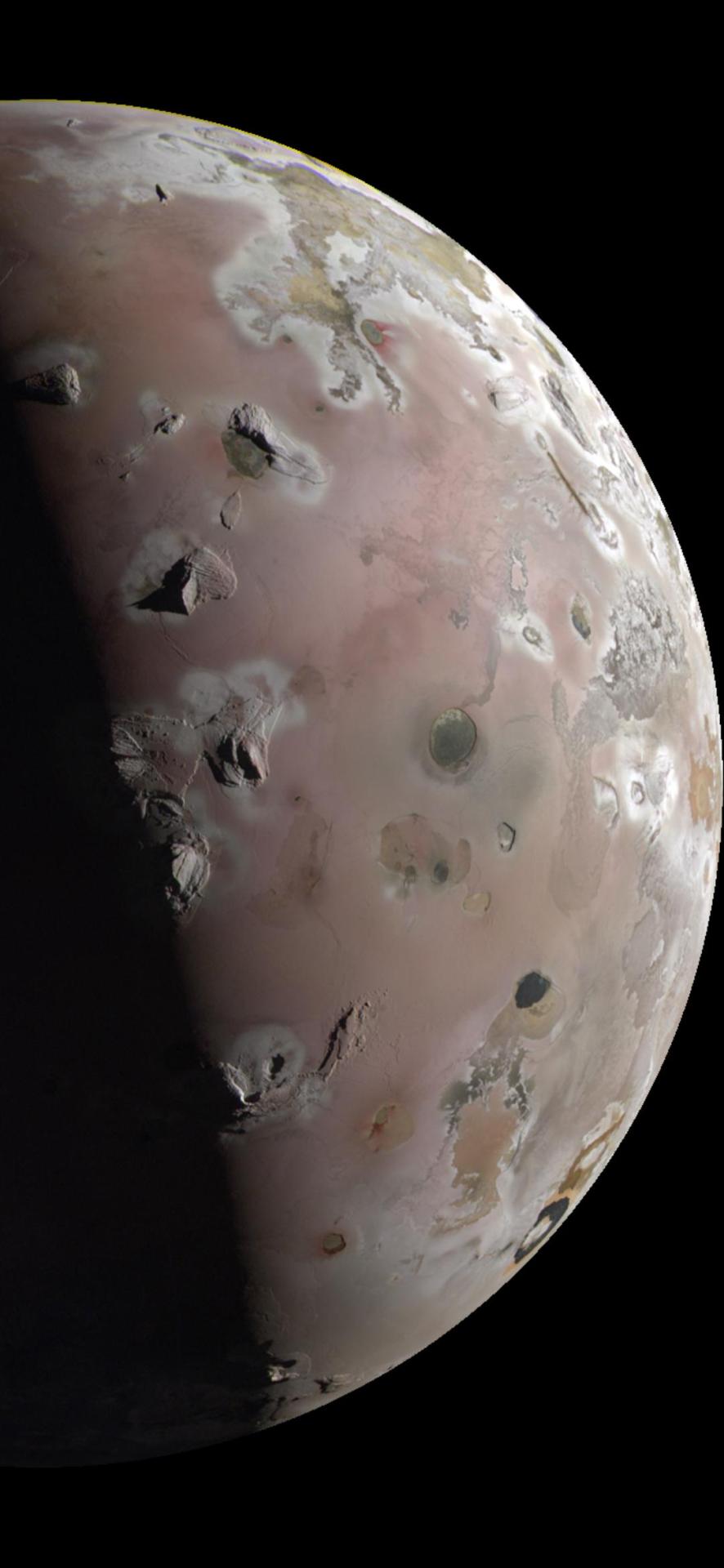
NASA’s Juno Gets a Close Look at Jupiter’s Volcanic Moon Io on Dec. 30, 2023 (via u/enknowledgepedia on r/spaceporn)
#io#jupiter#space#planets#solar system#moon#juno#nasa#nasa jpl#geology#astronomy#spaceporn#enknowledgepedia#reddit#vulcanism#volanos#dec 30 2023#landscape#surface#lunar surface#texture#topography#photography
1K notes
·
View notes
Text

Prehistoric lunar volcano. Life. December 15, 1958. Cover detail.
Internet Archive
1K notes
·
View notes
Text
Everything You Need to Know About Crystals: Moonstone (White)
Moonstone (The Sacred Stone of the Moon)
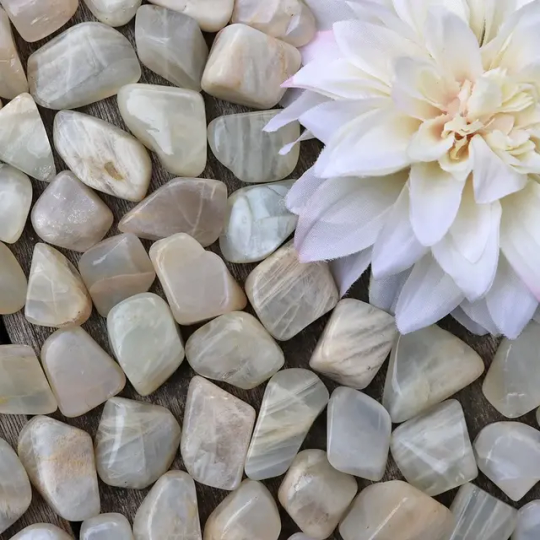
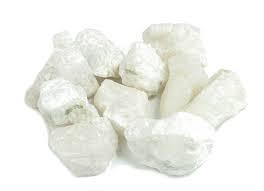
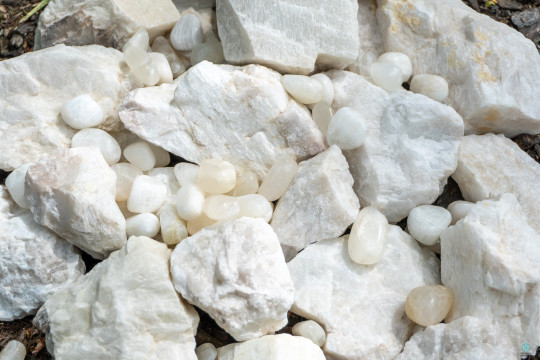
Color: White, cream, yellow, blue, green
Rarity: Easy to obtain
Hardiness: 6.5
Type: Oligoclase/ Feldspar
Chakra Association: Brow, Heart, Root, Third Eye, Sacral, Solar Plexus
Deities: All Lunar Deities, Diana, Selene, Artemis, Isis, Chandra
Birthstone: June
Astrological Signs: Cancer
Element: Water
Planet: Moon
Origin: Australia, India, Myanmar, Sri Lanka, USA
Powers: Femininity, Calmness, Balance, Luck, Intuition, Healing, Sensual, Patience, Reproductive Health
Crystals It Works Well With: Aquamarine, garnet, pearl
How It is Created: Moonstone is a type of feldspar composed of potassium aluminum silicate. It can be found in a number of colors, but all examples demonstrate a particular sheen known as labradorescence; an effect also found in labradorite and blue moonstone. Labradorescence is a light effect caused by parallel hairlike structures laid down within the crystal matrix, which reflect light back and forth, creating different-colored effects, including blue, yellow, silvery gray, and white.
History: Moonstone is the sacred stone of India. During the earliest traditions, the gem was said to have been embedded in the forehead of Ganesh, the four-handed god of the moon, since the beginning of time. It was written in Hindu mythology that moonstone is made from moonbeams, thus its luster.
The magnificent gem is never displayed outside for sale unless placed on a yellow cloth, as yellow is a sacred color. According to other legends, Moonstone can give gifts of prophecy and clairvoyance to the wearer. It could also clear the mind for the wearer to welcome wisdom. But to unlock this ability, Moonstone must be placed in their mouths during the full moon. Since ancient Egypt it is considered as a spiritual stone as it is seen as the gem of protection for night travelers.
Since Moonstone looks a lot like the moonshine, ancient Romans believed that it was formed from moonlight. If you look at the gem closely, you’ll see a dance of light that lurks on the insides of the gem. Ancient Greeks merged the names of the goddess of love (Aphrodite) and the goddess of the moon (Selene) and christened Moonstone as “Aphroselene”. While the Romans believed that the gem exhibits the image of their moon goddess, Diana.
It is also known as an aphrodisiac and when worn by two people, they will fall passionately in love when the moon is high. Moonstone was once called the “Travelers Stone” as it is said to protect those who travel at night, especially at sea.
What It Can Do:
When worn, can attract true love and arouse passion
If you give your lover a moonstone during the full moon, there will be passion between you always
Can settle disagreements and return things to peaceful status
Sewn into garments can enhance fertility
Wearing moonstone protects sensitive emotions
Enhances divination, prophetic dreams and prevents nightmares
Great for meditation and scrying
Represents yin and attracts peaceful energy
Protects travelers at night and by sea
Considered good luck
Balances male-female energies and aids men who want to get in touch with their feminine side
Affects the female reproductive cycle and alleviates menstrual-related diseases and tensions
Helps with digestive and reproductive systems, assimilates nutrients, eliminates toxins and fluid retention, and alleviates degenerative conditions of the skin, hair, eyes and fleshy organs such as the liver and pancreas.
How to Get the Best Out Of: Wear as a ring or place on the appropriate body part, would recommend the forehead, for spiritual experiences, and solar plexus or heart for emotions. Women may need to remove Moonstone at full moon.
How to Cleanse and Charge: Moonstone is relatively soft stone, 6 on the Mohs scale, so it should be handled with care as it can be easily scratched or crushed. Moonstone should be stored separate from other jewelry in its own soft bag or lined box and should not be worn while performing strenuous tasks that could result in it getting bumped or scratched. It can be cleaned with plain water and a soft cloth. If it gets scratched, take it to a jeweler to have it polished out.
Charge your moonstone in the light of the waxing moon and keep it out of direct sunlight.
Crystal Grid: N/A Couldn't find one that wasn't too complex @_@
Sources
#moonstone#witchblr#witch community#witchcraft#occulltism#paganblr#gemstone#crystal witch#crystals#witchcraft 101#witchcraft resources#geology#lunar#lunar witch#nature#geology rocks#rocks#samhain
338 notes
·
View notes
Text

Garden Quartz Pendant - Avail.
#etsyfinds#gemstones#jewelry#crystal gems#witchyvibes#crystals#lunar witch#witchcore#nature#gems#geology#healingstones#self healing#gratitude#mental wellness#healing#etsystore#etsyshop#etsyseller#etsy
6 notes
·
View notes
Text
The role of lunar exploration in understanding Earth's history

Lunar exploration has long captured the imagination of scientists and space enthusiasts alike. But beyond the excitement of moon landings and potential colonies, exploring the moon plays a crucial role in helping us understand Earth's history. Here's how:
The Moon as a time capsule
The moon acts as a natural time capsule. Unlike Earth, which undergoes constant change due to weather, tectonic activities, and human influence, the moon's surface remains relatively undisturbed. This preservation allows scientists to study its surface and gain insights into the early solar system, including the formative years of our own planet.
Understanding Earth's early days
By examining lunar rocks and soil, scientists can learn about the conditions that prevailed in the early solar system. The similarities and differences between lunar and terrestrial samples can help us piece together the history of planetary formation. For instance, the analysis of moon rocks brought back by the Apollo missions revealed that both the Earth and the moon share a common origin, likely from a colossal impact event.
Impact history
The moon’s surface is dotted with craters, a record of countless impacts over billions of years. By studying these craters, scientists can understand the history of asteroid and comet impacts in our solar system. This information is crucial because the same impacts that shaped the moon have also affected Earth. Learning about these events helps us understand the frequency and scale of impacts that have influenced Earth’s geological and biological history.
Lunar geology and Earth's evolution
Moon exploration has uncovered much about the moon’s geology, which in turn informs our understanding of Earth's geological processes. The moon’s lack of atmosphere means that its surface has remained largely unchanged, preserving a pristine record of its geological history. By comparing this with Earth's dynamic geology, scientists can infer the processes that have shaped our planet over time.
The Moon as a mirror
The moon also serves as a mirror to study Earth. Observations of Earth from the lunar surface provide unique perspectives that are impossible to obtain from Earth itself. These observations help scientists understand Earth's atmosphere, weather patterns, and environmental changes from a different vantage point.
Preparing for the future
Lunar exploration is not just about looking back; it’s also about preparing for the future. By studying the moon, scientists and engineers are developing technologies and strategies that will be essential for future space exploration. This includes learning how to build sustainable habitats, utilize lunar resources, and protect astronauts from space radiation. These advancements will be crucial for future missions to Mars and beyond.
Lunar exploration offers a window into the past, providing valuable insights into Earth's history and the broader solar system. By continuing to explore and study the moon, we not only unravel the mysteries of our own planet’s origins but also pave the way for humanity’s future in space. The moon holds the keys to many questions about our past, present, and future, making its exploration a vital endeavor for scientific discovery and advancement.
#lunar#lunarhistory#earthhistory#moonexploration#spaceexploration#scientificdiscovery#nasa#astronomy#solarsystem#space#cosmichistory#geology#apollo#futuremissions#scienceinnovation#planetaryscience
3 notes
·
View notes
Text

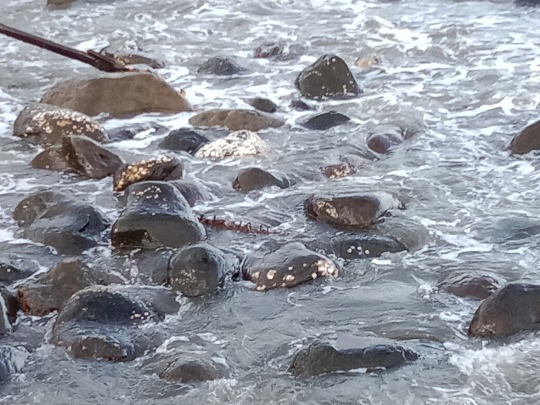
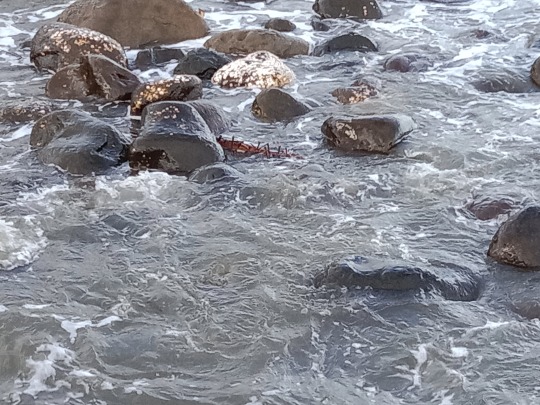

The molluscan sterility that marked the seashore, marked the inshore rocks as well. Expect for a few rocks that bore white blotches of Oyster encrustations, these black boulders were almost lunar of aspect, their black surface devoid of seaweed, periwinkles, barnacles, and even for that matter skittering crabs, they wont to scamper back on the seashore rocks of Andhra Pradesh, India, in literal swarms.
The rocks themselves though were interesting in their physical geology characteristics - nice rounded humps that looked almost man-made, a shoal of rounded rocks as it were.
Dawis Beach, January 26, 2024, Digos City, Mindanao, The Philippines.
#physical geology#beach#rock#boulders#crabs#seashore#sterility#tropics#lunar#india#seaweed#periwinkles#oyster#molusc#mindanao#rounded rocks
4 notes
·
View notes
Text
If there was no mass sterilization at 3.9 billion years ago, or if a few massive asteroid strikes confined the destruction to a single hemisphere, then Earth’s oldest ancestors may have been here from the haziest days of the planet’s own birth. And that, in turn, makes the notion of life elsewhere in the cosmos seem less implausible. Life might be able to withstand horrendous conditions much more readily than we thought. It might not need much time at all to take hold. It might arise early and often and may pepper the universe yet. Its endless forms, from tubemaking microbes to hunkering slime, may be too small or simple to communicate the way life does on Earth — but they would be no less real and no less alive.
Cannot express how cool this is. Well worth the read!
#science#geology#earth history#lunar history#space#geologic time#life on earth#fossils#archaeology#paleontology
0 notes
Link
SpaceTime Series 28 Episode 39 The Astronomy, Space and Science News Podcast Moon's Oldest Impact Crater Dated, NASA's Punch Mission Launches, and Europe's First Orbital Rocket Countdown In this episode of SpaceTime, we reveal groundbreaking findings that pinpoint the age of the Moon's oldest and largest impact crater, the Aitken Basin. Recent analysis of lunar regolith collected by China's Chang'e 6 mission indicates that this massive structure was formed approximately 4.25 billion years ago by a colossal asteroid impact. We discuss how this discovery enhances our understanding of the Moon's geological history and its role in the solar system's evolution. NASA's Punch Mission We also cover the successful launch of NASA's Polarimeter to Unify the Corona and Heliosphere (PUNCH) mission, which is now in orbit and entering its commissioning phase. This innovative mission aims to make 3D observations of the Sun's corona and its transformation into solar wind, providing vital data to improve space weather predictions and protect our technology from solar storms. Countdown for Europe's First Orbital Rocket Launch Additionally, we discuss the countdown for mainland Europe's first orbital rocket launch, a significant milestone for the European space economy. The launch of the Spectrum rocket by ISA Aerospace from Norway's Andoya spaceport is poised to mark a new era in European space exploration, especially following recent setbacks due to geopolitical challenges and delays in existing launch systems. 00:00 Space Time Series 28 Episode 39 for broadcast on 31 March 2025 00:49 Dating the Moon's Aitken Basin 06:30 Analysis of lunar samples from Chang'e 6 mission 12:15 Overview of NASA's Punch mission and its objectives 18:00 Implications of solar wind studies for space weather prediction 22:45 Countdown for Europe's first orbital rocket launch 27:00 Summary of recent space exploration developments 30:15 Discussion on the impact of microplastics on photosynthesis www.spacetimewithstuartgary.com www.bitesz.com 🌏 Get Our Exclusive NordVPN deal here ➼ www.bitesz.com/nordvpn. Enjoy incredible discounts and bonuses! Plus, it’s risk-free with Nord’s 30-day money-back guarantee! ✌ Check out our newest sponsor - Old Glory - Iconic Music and Sports Merch and now with official NASA merchandise. Well worth checking out... Become a supporter of this Podcast for as little as $3 per month and access commercial-free episodes plus bonuses: https://www.spacetimewithstuartgary.com/about ✍️ Episode References National Science Review https://www.nature.com/nsr/ NASA https://www.nasa.gov ISA Aerospace https://www.isa-aerospace.com/ Become a supporter of this podcast: https://www.spreaker.com/podcast/spacetime-space-astronomy--2458531/support.
#6#akken#basin#chang'e#coronal#crater#geology#geomagnetic#impact#lunar#mass#mission#moon#nasa#punch#solar#space#storms#weather#wind
0 notes
Text
Harrison Schmitt, the geologist who went to the Moon in Challenger, Apollo 17's LM, is quite the devotee.*
* Though given that Mr Schmitt also has form as a climate-change denier, I am not quite sure what he thinks the pressing need for fusion power actually is.
"The Moon: A History for the Future" - Oliver Morton
#book quotes#the moon#oliver morton#nonfiction#harrison schmitt#geology#astronaut#space travel#moon#challenger#apollo missions#apollo 17#moon landing#lunar module#devotee#climate change denial#fusion power
0 notes
Text
Never before has it had tire tracks across its surface or its boulders eroded by hammer blows.
"The Moon: A History for the Future" - Oliver Morton
#book quote#the moon#oliver morton#nonfiction#lunar surface#tire tracks#boulders#erosion#hammer#geology
0 notes
Text
DAILY DOSE: Obesity drugs not linked to suicidal thoughts; Controversy surrounds private company trip to the moon.
NO SAFETY CONCERNS. A recent study suggests GLP-1 agonists, used for obesity and diabetes treatment, don’t increase suicidal thoughts, countering previous concerns. The study, analyzing over a million U.S. health records, found no link between these drugs (including Ozempic and Wegovy) and suicidal ideation, possibly indicating a protective effect. However, experts urge caution, noting the…

View On WordPress
#Africa#Asia#Australia#clinical research#CRO#environment#Europe#Featured#geology#lunar exploration#natural disasters#North America#obesity#society#South America#space exploration#sustainability#zoology
0 notes
Text
There's less water in the mantle beneath the farside of the moon than in the mantle on the nearside, according to studies of the precious lunar samples brought back to Earth by China's Chang'e 6 mission. Furthermore, the findings bolster the theory that the moon formed when a giant, Mars-size protoplanet slammed into the young Earth about 4.5 billion years ago and sent a cascade of debris into orbit that coalesced into the powdery gray orb we see today. "We believe the new result is in line with the giant impact hypothesis of the moon," HU Sen, a professor at the Institute of Geology and Geophysics at the Chinese Academy of Sciences, told Space.com.
Continue Reading.
91 notes
·
View notes
